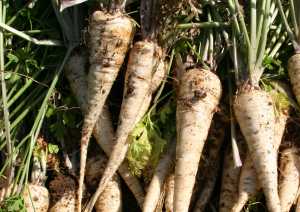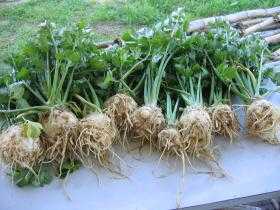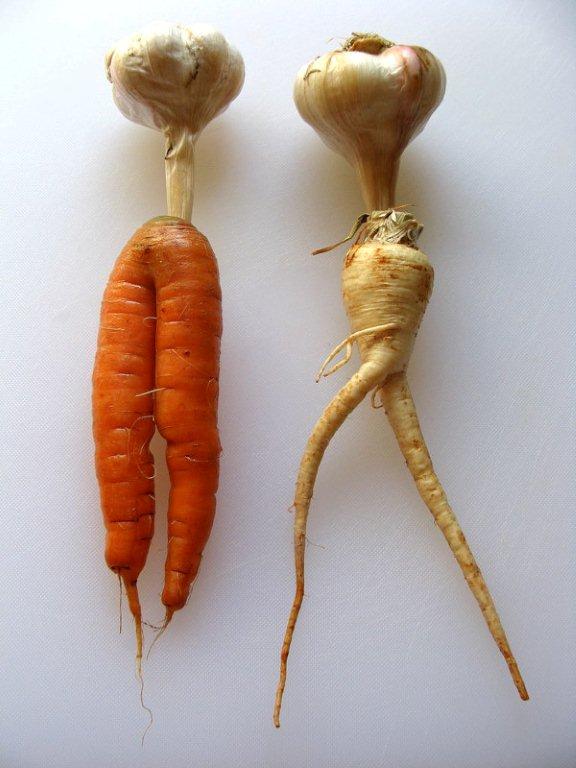“And who knows whether at a time like this you will attain the kingdom?” I want to see you be brave! In honor of Purim, Mpri Yadeha Is delighted to present Megillat Esther: A special assortment of fruit leather that’s a sweet reminiscent of what a brave woman can do! (Only 10 NIS apiece!)
___________________________________
Roots
Spring is almost here. Our bodies have begun the journey to get accustomed to summer, and nature’s every corner is bursting with green glory and a kaleidoscope of colorful blooms. At Chubeza, the recent heat has expedited many processes, almost like propelling growth and sprouting into the fast forward mode. Migratory birds fly above our heads as we weed and weed and weed, because as usual, our field is chock full of weeds. Now, in honor of Purim, we’re enjoying a little Nahfochu, with a minor spring storm. It’s hard to estimate the amount of rain that will fall over our fields, but in the meantime, we have been moving along with last winter planting and have started spring planting and seeding, waiting to see what the heavens hold in store for us this week. And for this week’s Newsletter, we’ve selected to feature a delicious, distinctive duo, the beloved celeriac and parsley roots.
Both these fine vegetables belong to the umbelliferae family (along with the carrot, coriander, dill, fennel and others). They perform a double duty for your soups: yummy and filling to munch on, as well as adding fragrance and flavor. Each of these roots has a green, stalk-like and faster growing “twin brother” that grows above earth, which has different uses in the kitchen. This week we’ll go a few feet under and talk about each member of the root duo.
Every plant needs roots and leaves, of course. The roots draw up the nutrients from the earth, and the leaves act as conduits to transform sunrays into available energy for the plant. This is why all parsley leaves have a root, and every parsley root has leaves (which look like… parsley, of course.) But not every parsley variety produces the root we call “root parsley.” The leaf parsley is satisfied with modest, thin roots and does not develop a thick root. The parsley root was developed over the years by farmers in the ongoing process of selecting preferred species and cultivating them. Thus, alongside the seeds kept from year to year from the plants boasting the biggest leaves or best taste or highest durability to extreme temperatures or pests, other seeds were kept as well– those of plants whose roots thickened. The “cultivated” result is the specie we call “root parsley,” a savory delight to add to the soup. Today it is a totally different specie than the parsley grown for its leaves.
The flavor has been described as a combination of celery, carrot, parsley and turnip. In short, a distinctive and indefinable flavor. It is somewhat sweet, but also earthy (as are most roots). For those who are familiar with the parsnip, note that the parsley root is not a parsnip! Though it looks a lot like the parsnip, the parsley root’s flavor is very different and not as sweet.
Parsley greens probably originated in the European Mediterranean area, but the root was cultivated in northern Europe, perhaps due to the fact that roots can be stored for longer periods during the harsh winters of the region. The earliest we hear about the parsley root is in 16th century Germany. Other names for the root attest to this geographic connections: “Dutch Parsley” and “Hamburg Parsley.” Because it was so loved in the cold European countries, it earned the nickname “Petoushka.”
The root parsley only grows in wintertime. Unlike its sister which grows leaves in summer as well–even under the scorching Israeli sun–the root parsley hates heat, and grows in winter’s low temperatures and high humidity. It also needs a lot more time to reach maturity. The roots appearing in your boxes were seeded in autumn and have been growing underground for some five months now (leaf parsley is ready in two to three months). The main challenge in growing root parsely is the thinning-out process. This parsley’s elongated roots need space to grow and fatten up, so it’s crucial to thin the bed which was manually seeded and thus grows plants in dense proximity. When we thin them, we remove some of the young sprouts, allowing their siblings some more “growing space.” We do not always do this in time, and therefore we pack a bunch of some smaller parsley roots in order to reach a suitable-sized portion.
Like its brother the stalk celery, the celeriac is a cultivated species, meaning it was cultivated over hundreds of years. Farmers sought its thickened root, selecting from season to season only the celery varieties which produced the chubbiest, biggest roots. In this case, the stems remained short and thin, with a taste far more prominent than that of stalk celery. Often the stems are hollow, like a straw. When you look at a bed of stalk celery alongside one of celeriac, it’s easy to identify them by the different way the leaves grow. The former are erect and long, the latter chubby and spread out.
Celery is a plant which grows slowly. It starts with its teeny, tiny seeds which take their time, two-to-five weeks, till they sprout. After their diminutive sprouting, they need at least another two months of devoted care in the warm, protected temperature of the plant nursery. Only after three months are they ready to be planted. We receive the young’uns when they’re approximately three months of age and ready to be lifted out of their black plastic cubes and placed in the fertile earth of Chubeza’s field.
Celery loves fertile earth and lots of water. As a plant which originated in the swamps, it likes humidity in the earth and also in storage, which is why it grows in wintertime in Israel. The Israeli summer is difficult and dry for the crisp celery plant. After three months in the nursery, it needs another three months to reach the prime age at which its leaves and stems can be harvested. The specie which develops a thick root is even more patient, waiting another month under the warm cover of Mother Earth and refusing to be coaxed out of its warm bed to the cold, raging winter. A simple calculation leads to the conclusion that the lovely celeriac visiting your boxes this week was created seven months ago!
And even when its time has come, the celeriac still holds on to the earth with all its might, and is not easily convinced to emerge. When we harvest the celeriac, we use a knife and gently release it by cutting the surrounding slender roots. Upon retrieving it from the earth, we attempt to shake it well and cut off the remaining clumps of earth still caught within. After this initial cleansing, we lead it to our vegetable washing tubs where it soaks for a while. Even so, when it arrives, you may still see remains of dirt. Immerse in water for some 30 minutes to expedite the final cleaning.
So holding these two yummy roots in your palms, you must want to rush to the kitchen to prepare some soup. But wait! First have a look at the great recipes in our new section for a variety of delectable uses for these roots. A must!
Lastly, in honor of our search for roots and the joyful month of Adar, I remembered this charming picture sent by Daniel from Modi’in. The caption read: “Do Chubeza vegetables have a secret, enchanted life where they dance the night away?”
Here’s hoping for a fine sunny-stormy week,
Alon, Bat Ami, Yochai, Dror and the Chubeza team ______________________________________________
WHAT’S IN THIS WEEK’S BOXES?
Monday: Baby greens (mesclun mix)/lettuce, coriander/parsley/nana mint, tomatoes, Swiss chard/spinach/kale, cucumbers/sweet red peppers, leeks/scallions, carrots, potatoes, snow peas, celeriac/parsley root, fava beans/garden peas.
Large box, in addition: Cauliflower/artichoke, broccoli/fennel, beets.
Wednesday: lettuce, coriander/parsley/nana mint, tomatoes, red mizuna/arugula/kale, cucumbers, leeks/scallions, carrots, potatoes, snow peas, celeriac/parsley root, fava beans/garden peas.
Large box, in addition:Swiss chard/spinach, cauliflower/cabbage/broccoli/fennel, beets.
And there’s more! You can add to your basket a wide, delectable range of additional products from fine small producers: flour, fruits, honey, dates, almonds, garbanzo beans, crackers, probiotic foods, dried fruits and leathers, olive oil, bakery products and goat dairy too! You can learn more about each producer on the Chubeza website. On our order system there’s a detailed listing of the products and their cost, you can make an order online now!




